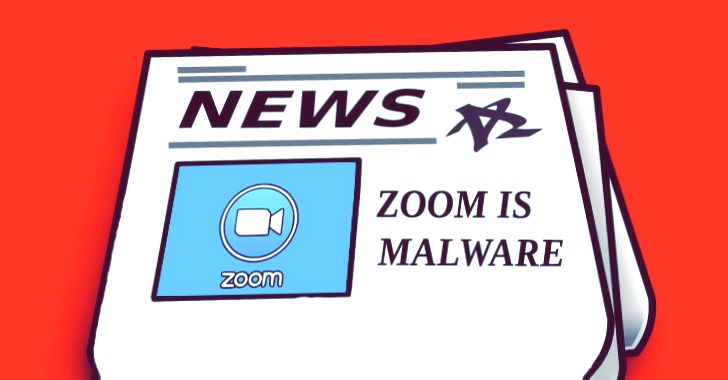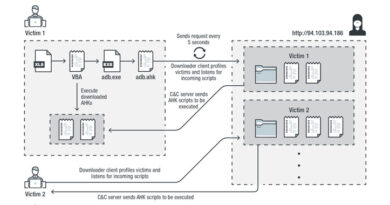Zoom Caught in Cybersecurity Debate Here’s Everything You Need To Know
Cybersecurity Over the past few weeks, the use of Zoom video conferencing software has exploded ever since it emerged the
the platform of choice to host everything from cabinet meetings to yoga classes amidst the ongoing coronavirus outbreak and work from home became the new normal.
The app has skyrocketed to 200 million daily users from an average of 10 million in December
— along with a 535 percent increase in daily traffic to its download page in the last month
— but it’s also seen a massive uptick in Zoom’s problems, all of which stem from sloppy design practices and security implementations.
Zoom may never have designed its product beyond enterprise chat initially,
but with the app now being used in a myriad number of ways and by regular consumers,
the company’s full scope of gaffes have come into sharp focus
— something it was able to avoid all this time.
But if this public scrutiny can make it a more secure product, it can only be a good thing in the long run.
Cybersecurity: A Laundry List of Issues
Zoom’s rapid sudden ascendance as a critical communications service has led to it drowning in a sea of privacy and security flaws.
But is Zoom a malware? Cybersecurity
As the Guardian reported, some experts believe so. But no, Zoom is not malware.
Rather, it’s a piece of legitimate software that’s, unfortunately, just full of security vulnerabilities
and we’re just now getting to know about it as the app was never scrutinized this thoroughly before —
- Zoom’s privacy policy came under criticism for making it possible to collect extensive data about its users
- — like videos, transcripts, and shared notes — and share it with third-parties for personal profit.
- On March 29, Zoom tightened its privacy policy to state that it doesn’t use data from meetings for any advertising.
- But it does use the data when people visit its marketing websites, including its home pages zoom.us and zoom.com.
- Security researcher Felix Seele found that Zoom uses a “shady” technique to install its Mac app without user interaction using
- On April 2, Zoom issued a fix to resolve the bug.
- Researchers discovered a flaw in Zoom’s Windows app that made it vulnerable to UNC path injection’ vulnerability
- that could allow remote attackers to steal victims’ Windows login credentials and even execute arbitrary commands on their systems.
- gain root privileges and access the mic and camera on macOS, thereby allowing for a way to record Zoom meetings. Cybersecurity
- they were able to access the LinkedIn profiles of other participants in their Zoom meetings without those users’ knowledge or consent.
- In response, Zoom has disabled the feature.
- Vice revealed that Zoom is leaking thousands of users’ email addresses and photos, and letting strangers try to initiate calls with each other.
- That’s because users with the same domain name in their email address
- Zoom blacklisted these domains. Cybersecurity
- On April 3, 2020, the Washington Post reported that it was trivial to find video recordings made in Zoom by searching the common file-naming pattern that Zoom applies automatically.
- These videos were found on publicly accessible Amazon storage buckets.
- Researchers created a new tool called “zWarDial” that searches for open Zoom meeting IDs,
- — video, audio, screen sharing, and chat
- which it currently maintains in the cloud. This also makes it easy for “hackers or a government intelligence agency to obtain access to those keys,”
- security expert Matthew Green said.
- Subsequent research by Citizen Lab found that they were also vague about the type of encryption used,
- with the keys generated for cryptographic operations “delivered to participants in a Zoom meeting through servers in China,
- even when all meeting participants, and the Zoom subscriber’s company, are outside of China.
- Zoom CEO Eric S. Yuan responded to Citizen Lab’s findings, stating given the period of high traffic,
- we mistakenly added our two Chinese datacenters to a lengthy whitelist of backup bridges, potentially enabling non-Chinese clients to
- — under extremely limited circumstances — connect to them.”
- Then there’s Zoombombing, where trolls take advantage of open or unprotected meetings and poor default configurations to take over screen-sharing and broadcast porn or other explicit material.
- The FBI issued a warning, urging users to adjust their settings to avoid hijacking of video calls.
- Effective April 4, Zoom began enabling the Waiting Room feature (which allows the host to control when a participant joins the meeting) and requiring users to enter a meeting password to prevent rampant abuse.
Should You Use Zoom or Not? Cybersecurity
In addition, the company has announced a 90-day freeze on releasing new features to “better identify, address, and fix issues proactively.”
It also aims to conduct a comprehensive review with third-party experts and release a transparency report that details information related to law enforcement requests for data, records, or content.
Ultimately, it all boils down to this: should you be continuing to use Zoom? It would be easy to look at all of these flaws and say that people should simply stay away from Zoom.
But it’s not that simple. Cybersecurity
Interestingly, for the very first time, we are witnessing different opinions from experts in the cybersecurity community.
Some say it’s wrong to criticize Zoom at this critical phase of time when the software is helping people do their work remotely, while others believe it’s best to abandon the platform for other alternatives.
However, some also took a neutral stance, concluding that choosing Zoom totally depends upon an individual’s threat model.
“The most prominent security issues with Zoom surround deliberate features designed to reduce friction in meetings, which also, by design, reduce privacy or security,” Citizen Lab wrote in its report.
The most important takeaway for regular users is simply to think carefully about their security and privacy needs for each call they make.
Zoom’s security is likely sufficient if it’s just for casual conversations or to hold social events and organize lectures. Cybersecurity
Citizen Lab, which has identified a severe security issue with Zoom’s Waiting Room feature,
has encouraged users to use the password feature for a “higher level of confidentiality than waiting rooms.”
For more tips on how to make Zoom calls secure, you can read EFF’s handy guide here.



